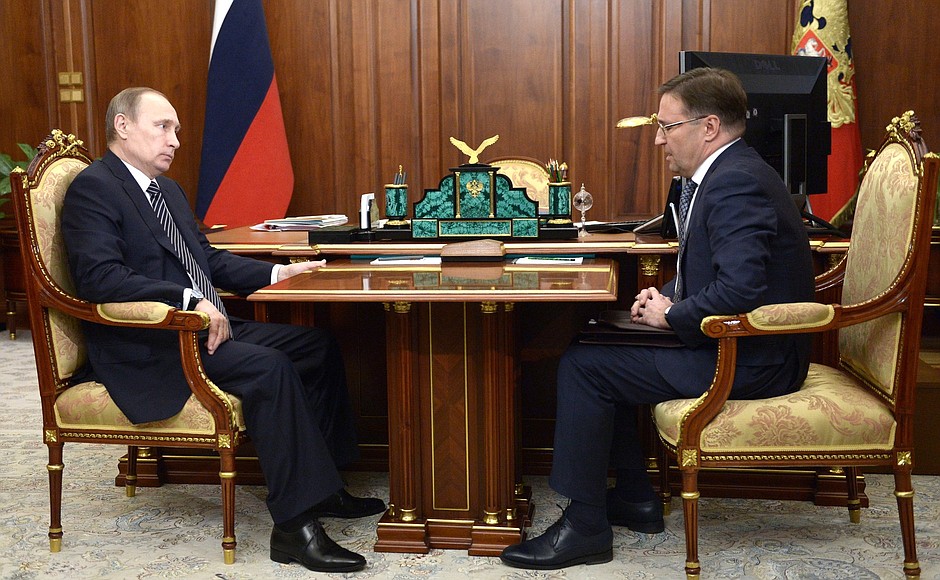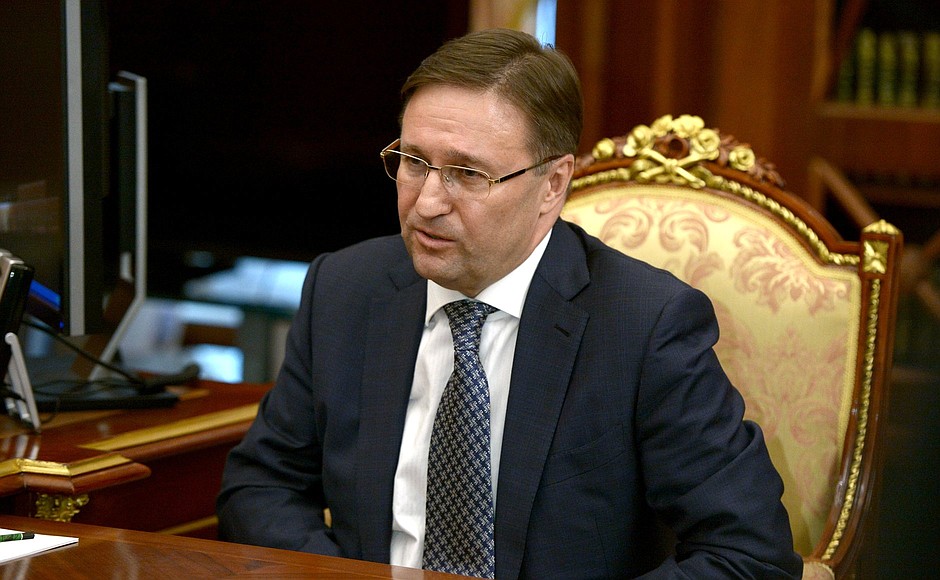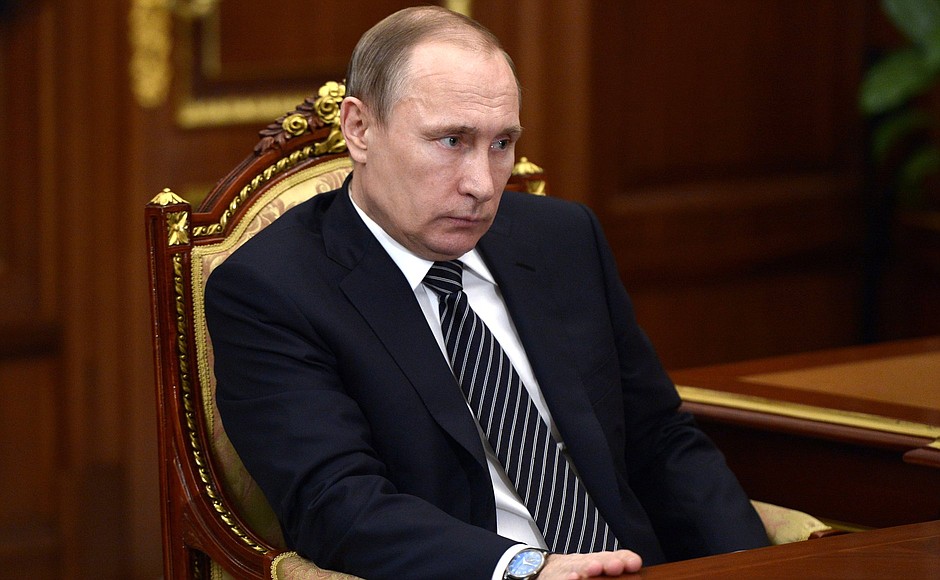President of Russia Vladimir Putin: Mr Aleshin, the subject of our conversation today is unfortunately a grave matter: the tragedy at the mine in Vorkuta.
A number of decisions were made recently, particularly after the tragic events, to increase safety in mines and to raise owners’ liability, decisions pertaining to safety equipment in mines and to greater discipline among the miners themselves, even in terms of changes of the remuneration system in some of its components.
What really happened in Vorkuta? Such a tragedy and such horrible consequences. It may be too early to draw definite conclusions. However, in your view today what has been established and what do you think brought about this tragedy?
Head of the Federal Service for Environmental, Technological and Nuclear Supervision Alexei Aleshin: Mr President, you are right when you say that the final conclusions will be made later, because this is not only a great tragedy, but it is also difficult to grasp the reasons that caused it.
To clarify, I would like to say that the accident on the Severnaya mine occurred in a course called Moshchny (Powerful). What makes it unique is that it is highly dangerous in terms of gas exhausts, coal dust and rock burst. We applied all the measures to establish the technological production methods and ensuring safety proceeding from these features.
Here we applied the most efficient method for combatting rock burst and gas exhausts – lower underworking of the seam. This is a very complicated and costly method, but the most effective one today in terms of preventing these developments. It was used here.
We also used forced draining of gases and a number of other methods. It is generally considered that all this should make a dangerous seam safe.
Now over to the developments on the section where the accident happened. This section has been developed since September 2014. There has been constant surveillance there as this is a section of a mine rated first category in terms of danger.
Over this time, our inspectors have been to the mine more than 10 times. They found some minor violations and, naturally, penalised those responsible and imposed fines. Work never stopped on this mine and in this section because none of these violations were critical in terms of posing a threat for people’s lives or health. Throughout the time of observation, there was no threat of excessive gas or coal dust content, which are the main components of an explosion.
In February, our inspector paid three visits to the section where the explosion occurred. There were no violations in gas and dust content. Moreover, this section had such a ventilation regime that it received 900 cubic metres of air instead of the required 400. Therefore, right until the accident, gas content was not only within the norm, but it was even lower than average, which means the environment there was quite comfortable.
Now over to the events of the 25th. At 14 hours 9 minutes and 28 seconds – we checked with the equipment that was operating there and timed everything down to a second – on the 28th second there was a sharp increase in the content of methane in individual sections of the long face. When I say ‘sharp increase’, I mean 20 and 100 times, in other words it was as if a single methane cloud passed through momentarily. The change occurred within 2–3 seconds or even fractions of a second.
On the 28th second, the automatic equipment switched the power off. The next measurement was taken 30 seconds later. During these 30 seconds all systems were violated, which means that the blast took place between the 28th and 58th seconds. Overall, it lasted no more than a minute: the cloud came, the equipment reacted and the explosion occurred.
Now about the causes and why we speak of preliminary causes. Generally, the technology used on this mine rules out anything of the kind. Such developments were considered impossible with these technologies. Therefore, this was probably some anomaly in the gob. Most probably – and this is only a hypothesis – there was a big overhanging level bank that did not break apart, although it should have, it caved in momentarily and, like a plunger, went down and forced the remaining methane into the long face where the people were working.
Why did this happen? We are now getting all our top experts together, specialists from universities and from the Academy of Sciences, so they provide us with answers why this happened and how it can be predicted, and, most importantly, prevented.
Vladimir Putin: This is of utmost importance. We need conclusions for practical use, to avoid such tragedies, any tragedies in the future.
As for social issues, I will definitely keep this under control and tomorrow the Government will report what they are doing for the people who were injured and for the victims’ families.
I would like to ask you to conduct the investigation with great care to get to the bottom of this tragedy, to draw practical conclusions in terms of technology and improving the equipment in mines to ensure the people’s safety.
<…>


